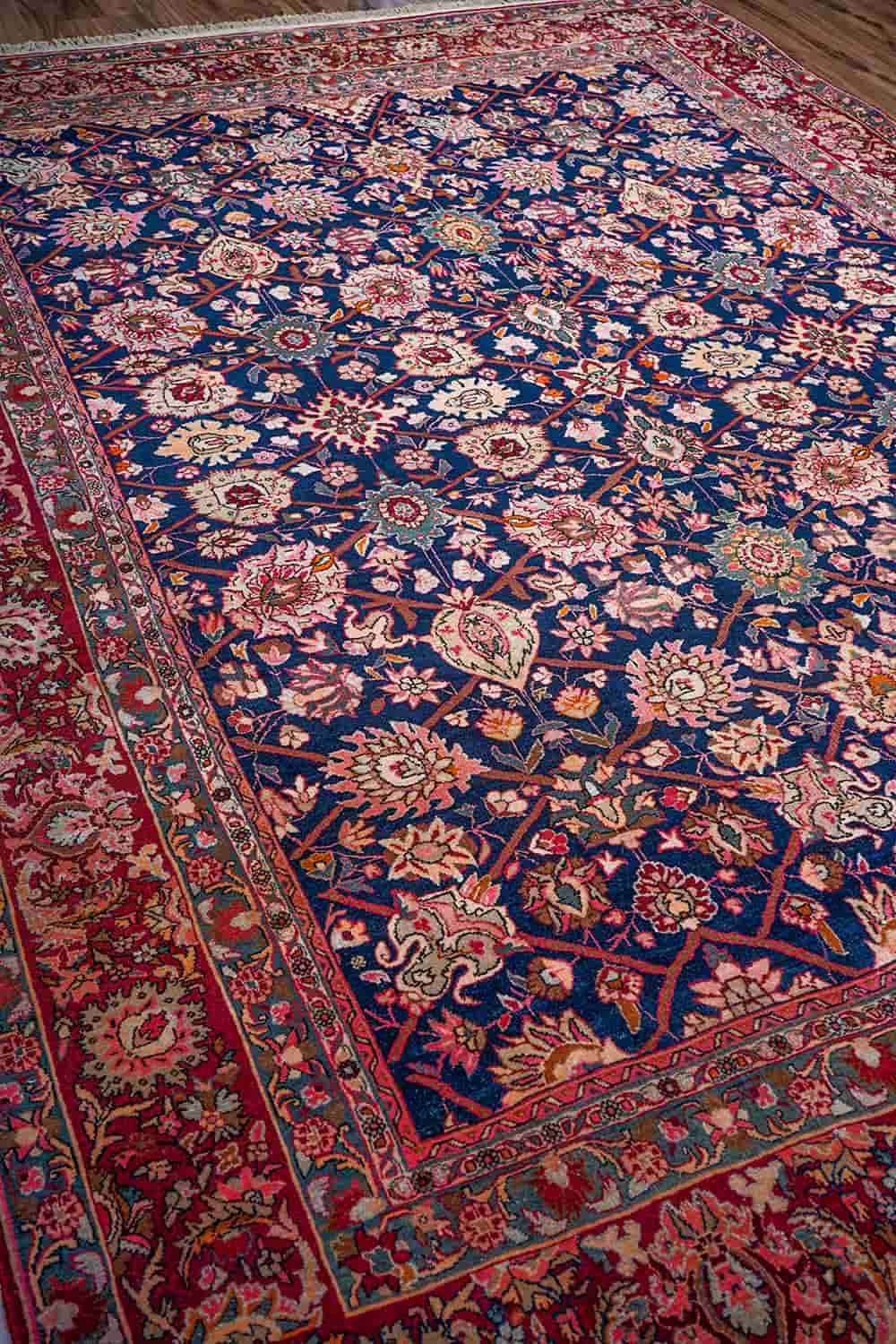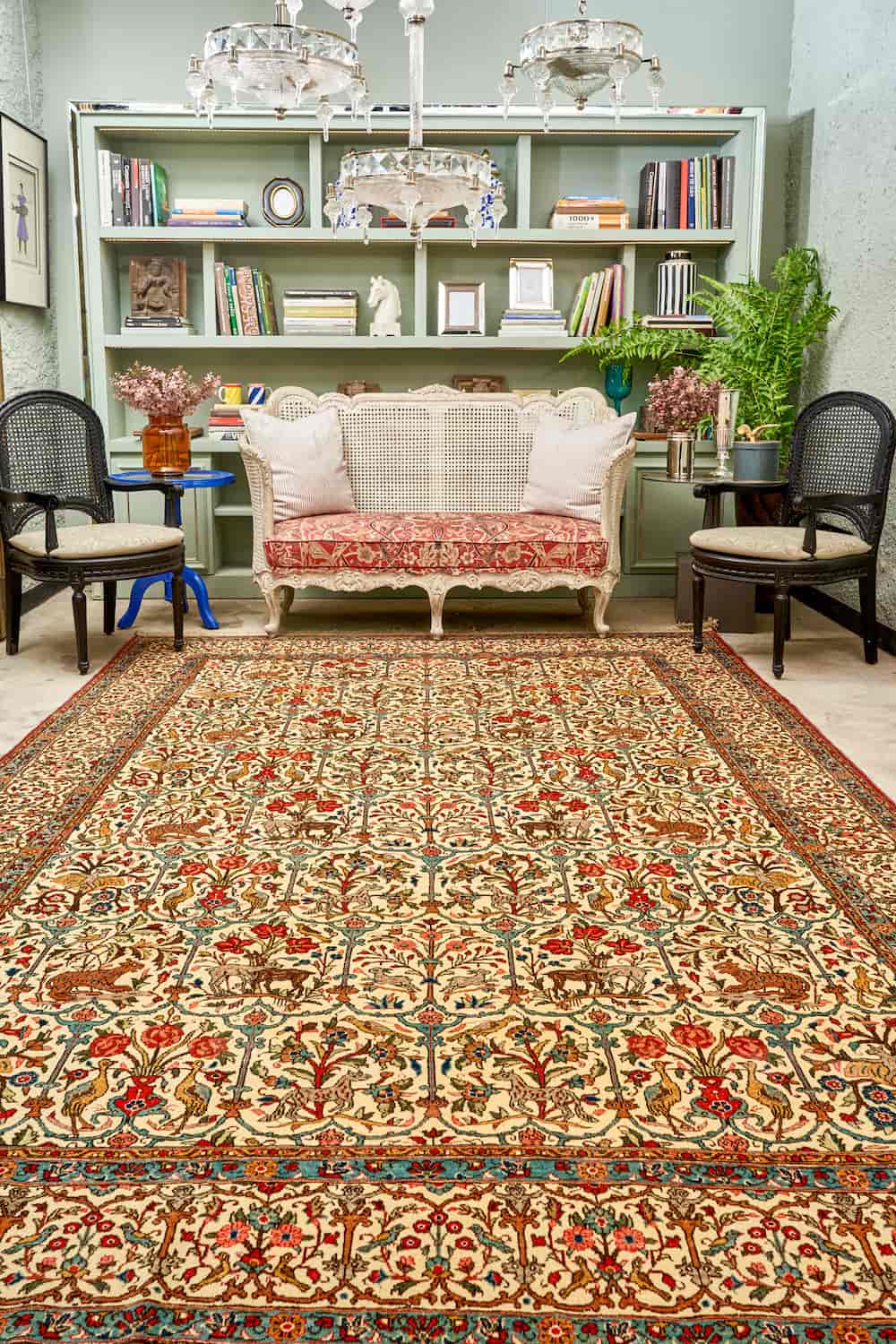What’s so special about Persian rugs?
March 16, 2023 2023-06-28 11:40What’s so special about Persian rugs?

What’s so special about Persian rugs?
With their intricate designs, rich colours, and outstanding craftsmanship, it is no secret that Persian rugs have long been revered by royalty, antiquities enthusiasts, and interior designers alike. They have evolved from utilitarian products used to protect against the cold to statement pieces that have adorned the houses of global rulers and the elite.
But with cheaper, factory-made alternatives now available around the globe, what is it that still makes authentic, handcrafted Persian rugs worth the investment?

The origin of Persian rugs
When the Persian Empire conquered what we now know as Iran in 539 BC, there were already skilled carpet weavers amongst the region’s ancient nomadic communities. As sheep and goat herders, they had an unlimited supply of wool, which was transformed into sumptuous rugs that were used to cover dirt floors and insulated them from the cold.
Over time, they became highly sought after as objects of wealth, with Cyrus the Great, said to have decorated his palace with authentic Persian rugs. When the Seljuk’s conquered the region in the 11th century, they encountered female carpet weavers using the Ghiordes knot, which is still used in Persian rug production throughout Iranian Azerbaijan today.

The glory years of Persian rugs
Persian carpet weaving truly bloomed during the reign of Shah Abbas (1587 to 1629), who encouraged the craft and transformed the capital, Esfahan, into a hub for trading rugs with European markets. Many of the most exquisite Persian rugs found in museum collections today date from this period.
During a tumultuous period of fighting against the Afghans, Turks, and Russians, the large-scale manufacture of Persian rugs was put on hold. Once peace settled in the region, the focus was again turned to promoting Persian craftsmanship and by the 19th century, owning an original Persian rug was a sign of privilege and prestige.
Where do Persian rugs stand today?
Today, Persian rugs continue to be in high demand, particularly when it comes to hand-woven carpets that reflect the skills and creativity of the artisans who craft them. Unlike machine-made rugs, they are imbued with the weaving knowledge that has been passed down from generation to generation and the uniqueness that handmade products offer.
Persian rugs are far from just floor coverings but works of art, with most made from wool and/or silk (rather than synthetic materials) and coloured using vegetable dyes. They also tell a story of their origin of production through the use of different motifs and designs. For example, Kerman carpets often depict a damask rose while central medallions are a feature of Kashan rugs. On the other hand, Mohtasham rugs reflect the colouration and style of the 19th-century master weaver, Hajji Mollah Hassan Mohtasham.

Parting words
When you consider the rich history of Persian rug design and the knowledge that is embodied in them, the allure of these statement pieces just can’t be matched by factory-made alternatives. Owning an authentic Persian rug is a testament to the importance of craftsmanship and keeping centuries-old cultural traditions alive.
If you’re looking for more handmade carpets, visit the Carpet Cellar website and explore our stunning range of authentic Persian rugs, modern carpets, flatweaves and more that can be shipped around the globe.
For further reading, check out:




